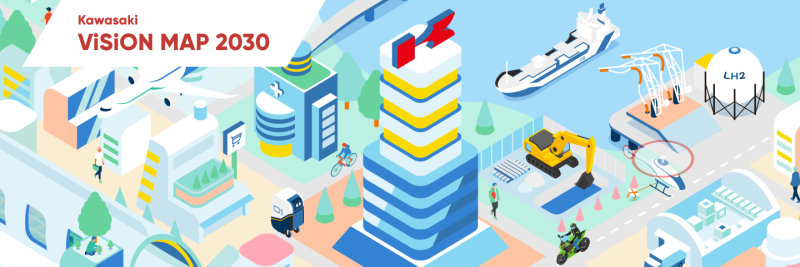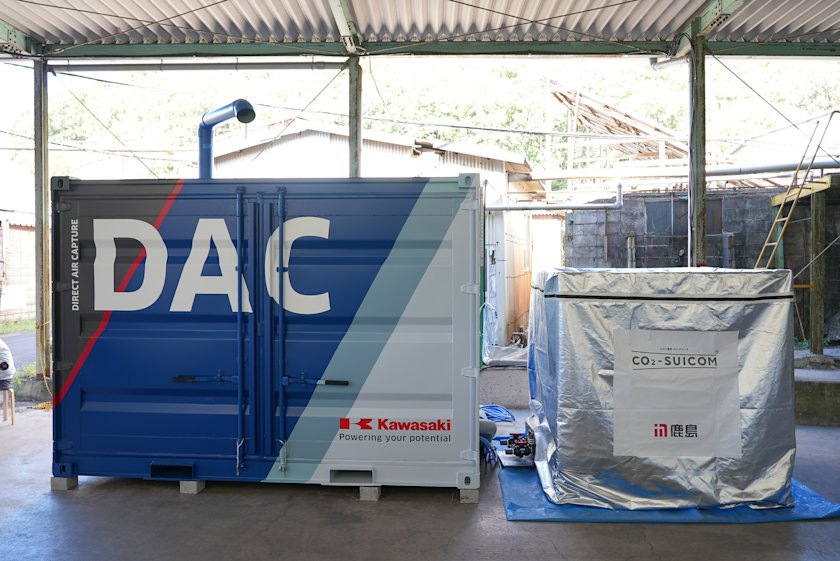Ideally, no one would be aware of our transition to hydrogen

Hydrogen in the main fuel for power generation in gas turbines in the future because it does not emit carbon dioxide during operation. Currently, solutions are being developed to respond to the increasing demand for hydrogen power generation. Here is the voice of an employee using evolving technologies to create diverse gas turbines while maintaining the convenience of daily life. (This article is a part of Kawasaki ViSiON MAP 2030, which imagines the future of the Kawasaki Group.)

Energy Solution & Marine Engineering Company
Uto has been deeply connected to the environmental issues since he was a high school student. He joined Kawasaki in 2013 to focus on the intersection of the environment and machine energizing. He experienced success in his collaboration on gas turbine development with RWTH Aachen University in Germany, and feels immensely motivated by his work.
A shift in power generation will be the key to a different CO2 situation in Japan
It was not always this hot in the summer – the environment has shifted dramatically in the last few decades. While I was thinking about the future and my career, I was struck once again by the environmental issues I had cared about since high school. Carbon dioxide (CO2) contributes significantly to global warming. About 40% of the emissions in Japan is attributed to energy issues, including power generation. This means that Japan’s CO2 emissions can be reduced dramatically if power generation is changed. This is how I decided I had to work on power plants at Kawasaki.

Introducing new answers with both 100% hydrogen and hydrogen mixed-fuel
The demand for hydrogen power generation is increasing because hydrogen fuel does not emit CO2 during combustion. My role is to design and develop gas turbines for power generation which use hydrogen as the main fuel. While we study a variety of different fuels including natural gas, I feel hydrogen will be the mainstream of the future and find it fascinating that conventional fuels and hydrogen burn differently in the same gas turbine. What we are currently working on is to reduce the generation of harmful nitrogen oxides while maintaining stable combustion. In addition, since the available parts and safety measures that we must pay attention differ along with the combustion condition in the combustor, the flow path and injection method of the fuel are controlled for safer, more efficient combustion in the gas turbine. As the use and demand for fuels depend on the country and the situation, I am going to develop more diverse gas turbines with fuel flexibility than ever to satisfy each need.

Technologies should change while avoiding altering people’s lives
In my opinion, the transition to hydrogen and other next-generation energies should go unnoticed to people living their ordinary lives. Although I obviously want each individual to be conscious and to care about the environment, extreme inconvenience in life or high energy costs will lead to failure in familiarizing this new energy source. I would like to create a world where hydrogen is in common use in the same way as conventional fuels without changing our lifestyle. Our vision for 2030 as the first milestone – Kawasaki is advancing the conversion to the entire product line to 100% hydrogen-fueled gas turbines, including large models, and will use hydrogen as the principal energy source in its plants in Japan. It is a necessary step forward that we will introduce while not changing people’s lives considerably.

The information contained in the article is current as of December 2022.
"Kawasaki ViSiON MAP 2030" presents the future we want to realize by the year 2030, presented through the voices of Kawasaki staff working towards our vision. We hope you join us to learn about their efforts in social change, and to imagine the future we can achieve together.







